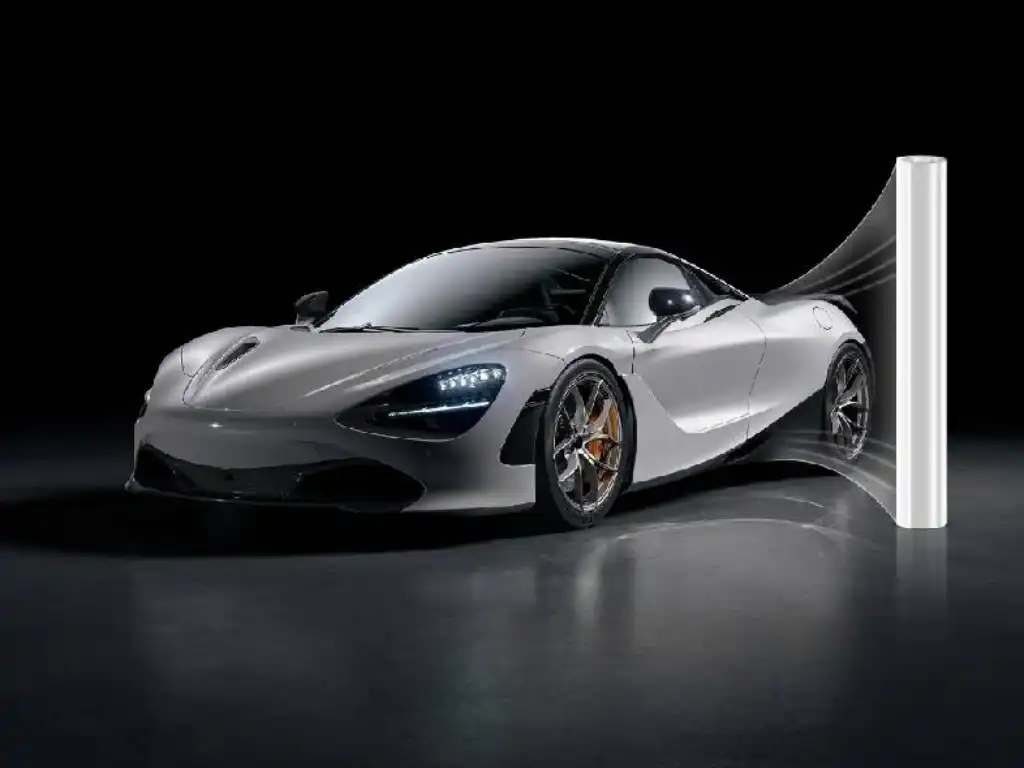Overview
Paint Protection Film (PPF) is a vital technological development in the automobile sector. It is the greatest protection for all car paints regardless of type damages. For the first time, it was developed to protect the helicopter rotor blades from wearing out with time. Now, consumers too can leverage this technology. It is the main function of the paint to prevent the car from the daily factors of the outside environment. It is a clear, sticky film that is also known as “clear bra.” It is a kind of shield that helps to keep the paint quality and protect the vehicle by creating a barrier between the paint and the environment. This guard has benefits of safeguarding the vehicle from hazards like rock chips and small scratches.
PPF protection is not only a matter of paintwork, but also a matter of car interior and the materials used in car construction. PPF is an application procedure that depends on the use of the right tools, making the car body contours fit the car body neatly. This aspect is crucial since it allows the car to retain its original shape as well as its visual appearance. The film is an excellent way of protecting natural components and it is also very important in maintaining the car’s resale value since it prevents the paint from deteriorating. The PPF’s merits have become more recognized in the automotive industry, which has made it more and more widely used. This method is well-liked by many car owners who want to improve the durability and visual appeal of their vehicle.
What is Paint Protection Film (PPF) for Cars?
Paint Protection Film (PPF) is a thermoplastic urethane film applied to the painted surfaces of a vehicle to shield the paint against stone chips, bug splatter, and minor abrasions. This film is commonly used for those parts of the vehicle that are subject to high-impact such as the front end, hood, fenders, side mirrors and rear bumper. The uncommon material of PPF enables it to take up impact and resist scratching, thus it is the first line of defense against all the road debris and severe weather conditions.
PPF Technology has been enhanced ever since with films that not only offer protection but also gives the vehicle a better look with finishing choices like glossy or matte. PPF is an “invisible shield” that is very compatible with car’s design and sometimes is so perfect that it is impossible to distinguish from the original paint. Such a quality is very attractive to those vehicle owners who are very fastidious about keeping their car’s appearance, while at the same time protecting the car’s surface from the daily hazards.
How PPF Works to Protect Your Car?
PPF provides a protective layer on your car’s paint. It shields against UV rays, acid rain, tree sap, and other environmental pollutants. The film is made up of several layers. One important layer is the clear coat, which has self-healing properties. This means that minor scratches and swirls can vanish when heated. This feature is particularly beneficial for keeping the car looking perfect over time.
Additionally, the film includes an adhesive layer. This layer sticks securely to the car’s surface without damaging the original paint. It allows the film to be removed later without leaving any residue.
The installation process of PPF is detailed and usually needs a skilled installer. The installer uses a heat gun and a squeegee to apply the film smoothly. This ensures that there are no air bubbles or wrinkles. The film is flexible enough to stretch and mold to the car’s shape without tearing or coming off.
Car paint protection film acts as a shield, protecting the paint from direct impacts like rocks and stone chips. It also reduces damage from regular washing and maintenance. Thus, it helps maintain the paint’s integrity and shine.
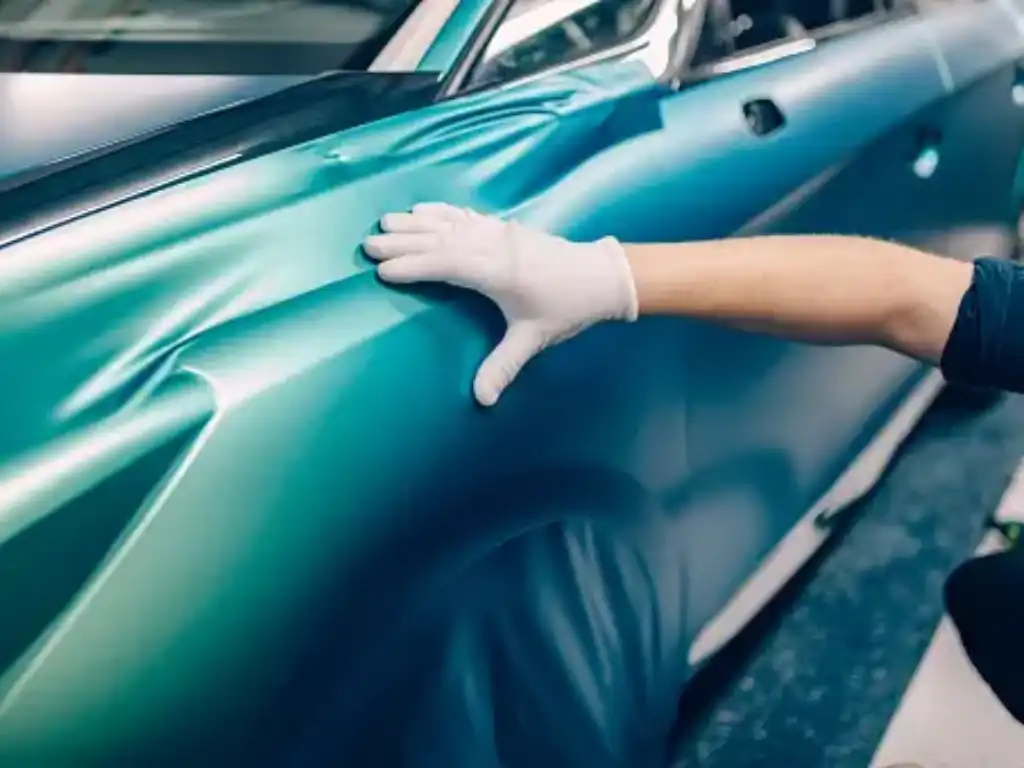
Pros of Applying PPF on Your Car
Protection from Environmental Damage
PPF offers exceptional protection against a variety of environmental aggressors such as UV rays, acid rain, and tree sap. UV exposure can cause paint to fade and degrade over time, while acid rain can etch paint surfaces, leading to irreversible paint damage. PPF acts as an invisible armor for your vehicle’s paintwork, providing a barrier against these harmful effects and maintaining the vehicle’s aesthetic value. Additionally, the protective film is resistant to staining from pollutants and bird droppings, which are acidic and can cause permanent damage if not cleaned promptly.
Resistance to Scratches and Stains
PPF is one of the main advantages and it is not affected by scratches and stains. The film is made in a way that it is impact-absorbing so that when debris like rocks and gravel found on the road hit the front and side panels of the car, the paint will not be scratched or chipped. Adding to that, the clear coat layer on the top of the film is self-healing, so light scratches disappear when exposed to sunlight or heat. Thanks to that feature, the car remains in the same condition for a long time, and therefore, the necessity of repainting is greatly reduced.
Self-Healing Properties
The ability to heal itself is one of the most innovative features of the high-grade PPF products. These films are designed to have the capability of self-repairing when the film is scratched or swirled. The sun’s heat or an engine can get the healing process started, flattening out any flaws and bringing the film back to its original condition. This skill greatly reduces the need for physical repairs and helps preserve the car’s appearance without any extra intervention.
Extended Durability and Warranty
PPF is designed for longevity, with many products offering warranties that extend up to 10 years. This long-term protection is due to the film’s durable material and advanced adhesive qualities, which ensure it remains intact and effective for protecting the paint. The extended warranty provides car owners with peace of mind, knowing that their investment is protected against potential defects or deterioration in the film over time.
Preserves Resale Value
Retaining the original condition of your car’s paint is one of the key factors that can impact significantly on its resale value. PPF is an excellent way to ensure the quality of the paint, which is often compromised by general wear and tear over the years. This protection is particularly crucial for the luxury cars where the cost of painting a single vehicle is often very expensive. This is a very significant thing because it allows the car to look newer for longer periods of time, which is appealing for the potential buyers and gives to the car a higher market value.
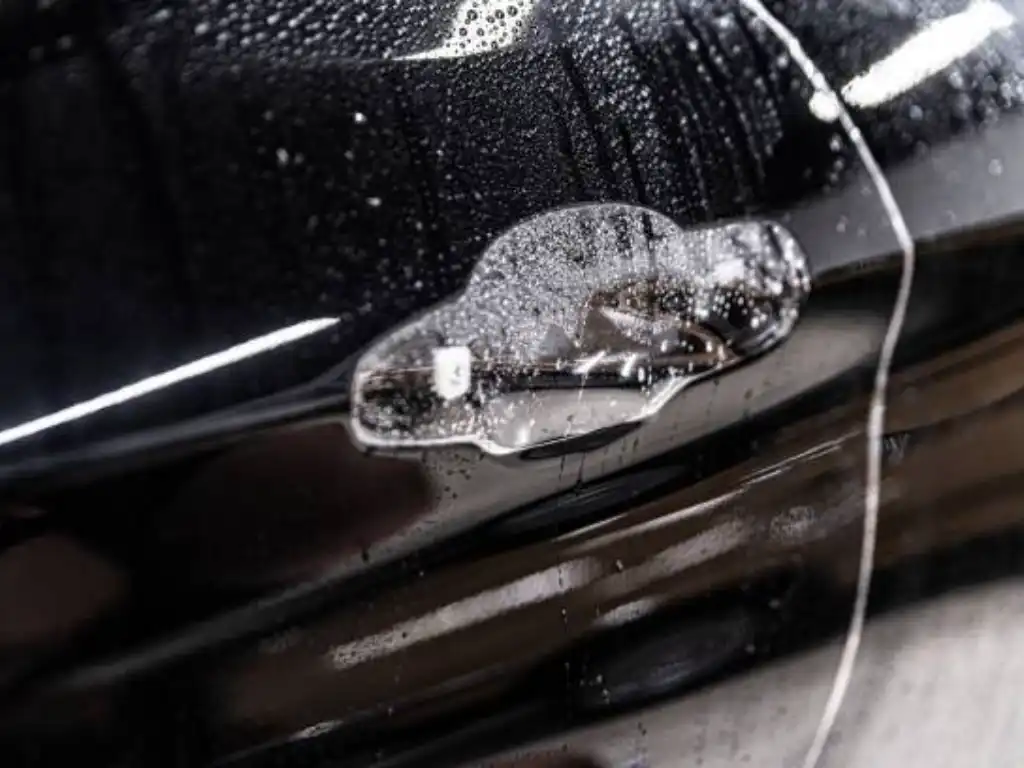
Cons of Applying PPF on Your Car
Potential for Poor Installation
While PPF offers numerous benefits, the effectiveness of the film can be significantly compromised by poor installation. This includes misalignment, wrinkles, and air bubbles, which not only detract from the car’s appearance but also weaken the film’s protective capabilities. Professional installation by certified technicians is crucial to ensure that PPF is applied correctly and performs as expected.
Maintenance Requirements
Although PPF is low maintenance compared to other paint protection options, it still requires proper care to maintain its efficacy and appearance on a daily basis. Regular cleaning and occasional deep maintenance are necessary to prevent dirt and debris from building up on the film’s surface, which can degrade its protective qualities over time. Car owners must be diligent in maintaining their PPF, including avoiding harsh chemicals and abrasives during cleaning.
Types of PPF
| Type | Features |
| Clear Glossy Films | Enhances the natural shine and color of the car’s paint, highly protective |
| Matte Finish Films | Provides a smooth, non-reflective finish, reducing glare |
| Colored and Customized Films | Allows for personalization, available in various colors and textures |
Clear Glossy Films
We all know that clear glossy PPFs are known for maximizing the natural shine and color of a car’s paint. These films are almost transparent and provide a shiny finish similar to the new paint job. They are a perfect choice for car owners who prefer the original look of their vehicle without changing its style. Along with the looks, clear glossy films provide a very good protection against dirt, bird droppings and light scratches. This guarantees that the paint remains in the best natural shape. The majority of the folks opt for the clear glossy type to show off their car’s original paint as well as shield it from daily driving risks.
Matte Finish Films
Matte finish PPFs are for those who prefer a smooth, understated style for their car. These films keep the same protective features as clear films but have a matte surface that reduces shine. This change can greatly modify the car’s appearance, giving it a modern and elegant look. Matte films are especially favored by owners of high-performance and luxury cars. They not only protect the paint but also provide a unique, custom feel that highlights the car. Additionally, matte PPFs are good at covering small paint flaws, making them suitable for older cars that may already show wear.
Colored and Customized Films
For car owners who want to customize their cars even further, PPFs are available in a variety of colors and styles that can completely transform the look of a car. The coloring of the films may be from the subtle to the bright, from the low-key shades to the bold colors that attract attention. Customized films can be used to copy the looks of expensive materials such as carbon fiber or metallic finishes. This is achieved by giving a luxurious, personalized look without the need for repainting. Not only these films have style but also they protect against UV rays, scratches, and stains. For those who view their vehicle as a personal expression, these films are a way to do a customization of their car while at the same time protecting their investment.
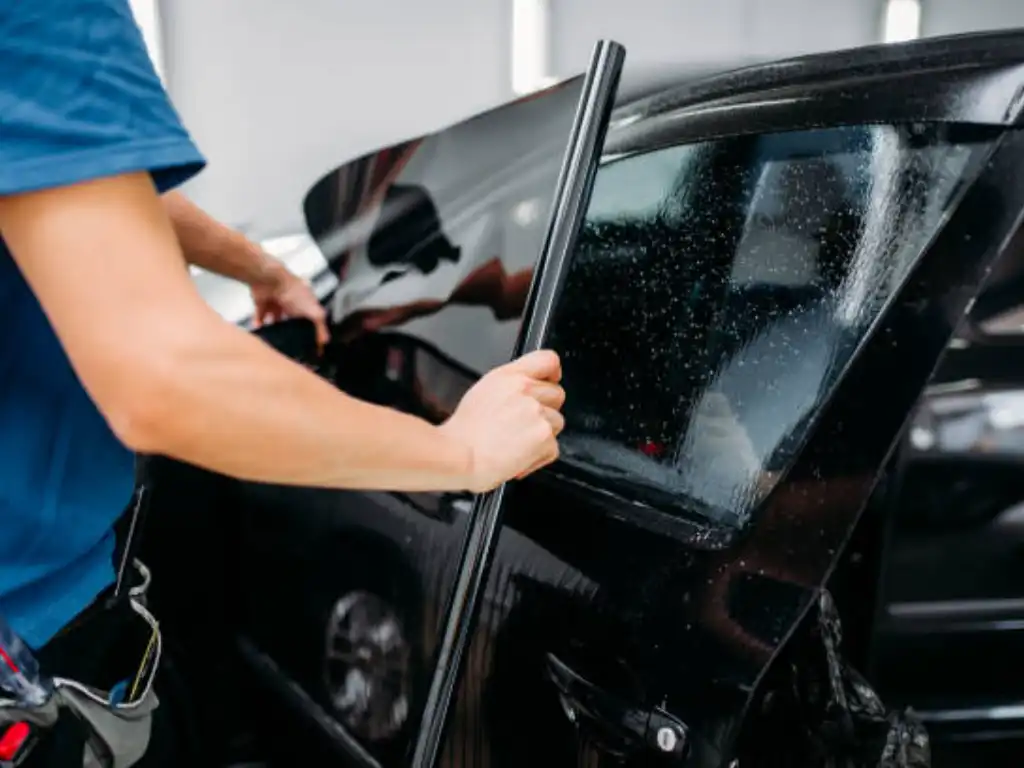
Is PPF Worth the Investment?
The initial outlay of PPF investment can be quite high, however, long-term benefits usually compensate for this initial outlay. Through shielding the car’s paint from environmental impact, deterioration, and keeping its visual appeal, PPF helps in increasing the vehicle’s life span and its worth. Besides, PPF is cheaper than a full paint job or repeated minor repairs, thus the solution for many car owners.
While deciding whether PPF is worth investing, reflect on the conditions your vehicle encounters frequently. If you live in an area with severe environmental conditions or frequent road debris, PPF performs a shielding function well and maintains the newness of your entire car for a long time. On the other hand, PPF ensures that your vehicle’s paint is not damaged, which is another reason why PPF is a good investment for any car owner.
What to Consider Before Buying PPF
The Reputation and Expertise of the Installer
The right choice of installer is the main key to success of the application of PPF on your car. The professional ppf installer will apply the film smoothly, without any wrinkles or bubbles. Such flaws may impact the film’s ability to protect your car from getting damages. When scouting for installers, be sure that they are certified by the recognized organizations in the industry, for example, the Professional Detailing Association. Furthermore, it is important to obtain PPF manufacturers’ approvals on your own. The reading of customer reviews and testimonials is a good way to have a clue of the quality of the installer’s work and their level of commitment to customer service. The installer’s level of expertise is a determining factor in the quality and the duration of the PPF on your car.
Warranty and Aftercare Services
Knowing the warranty and the aftercare services is a key element when you buy PPF. An excellent warranty should be for any problems that the film might have, like discoloration, cracks, or peeling. Make sure the service provider has a wide range of aftercare support services. These services play a key role in the fast and quality problem solving once the installation is over. Certain top brands offer up to 10 years’ warranty, which is a testimony to their quality and durability.
Your Vehicle’s Needs and Usage
Ponder over the specific climatic conditions your car faces on a regular basis. On the other hand, there may be the need for a thicker and more resilient film that could withstand the gravel roads or severe weather conditions. This way, you will be able to select the right PPF based on the paint condition of your vehicle. The correct choice of PPF will make the film work well and the film will look good for a long time.
Maintenance of PPF
Cleaning and Care Recommendations
Maintaining PPF involves regular cleaning to prevent contaminants like dust and dirt from degrading the film’s protective properties. Use soft cloths and mild cleaning solutions recommended by the PPF manufacturer to avoid damaging the film. Harsh chemicals and abrasive cleaning tools should be avoided as they can wear down the film over time, potentially leading to issues such as scratching or cloudiness.
Common Maintenance Issues and Solutions
Proper maintenance can mitigate common issues such as lifting or yellowing of the film. Lifting often occurs at the edges and can be minimized by professional-quality installation and periodic inspections to re-secure any edges that may begin to peel. Yellowing may result from extended UV exposure; using PPFs with UV inhibitors can extend the clarity and appearance of the film. If discoloration occurs, consult with a professional to explore solutions such as film replacement or specialized treatments to restore the film’s appearance.
Cost Analysis of PPF
Initial Cost vs. Long-Term Savings
The initial installation cost of PPF typically ranges from $600 to $8,000 or more, depending on the vehicle size and the film’s coverage area. Although this may seem like a significant upfront investment, the long-term savings are considerable. Protecting your vehicle’s paint from damage can drastically reduce the need for costly repairs and repainting, which can easily exceed the initial cost of PPF installation over the vehicle’s lifespan. Additionally, maintaining the original paint can significantly enhance the vehicle’s resale value.
Related Posts: How Much does Paint Protection Film Cost?
Comparing Costs of Different PPF Brands
It is necessary to make comparisons between the options offered by the different brands of PPF to find the best offer. Premium brands such as Clearpro, XPEL and 3M may charge more than other brands at the beginning, but they are usually accompanied by features like elasticity, optical clarity and longer warranties that can explain the higher paint protection film cost. According to a Car and Driver review, premium PPF brands provide better durability and self-healing properties, therefore, they are a viable option for those who desire maximum protection and product longevity.
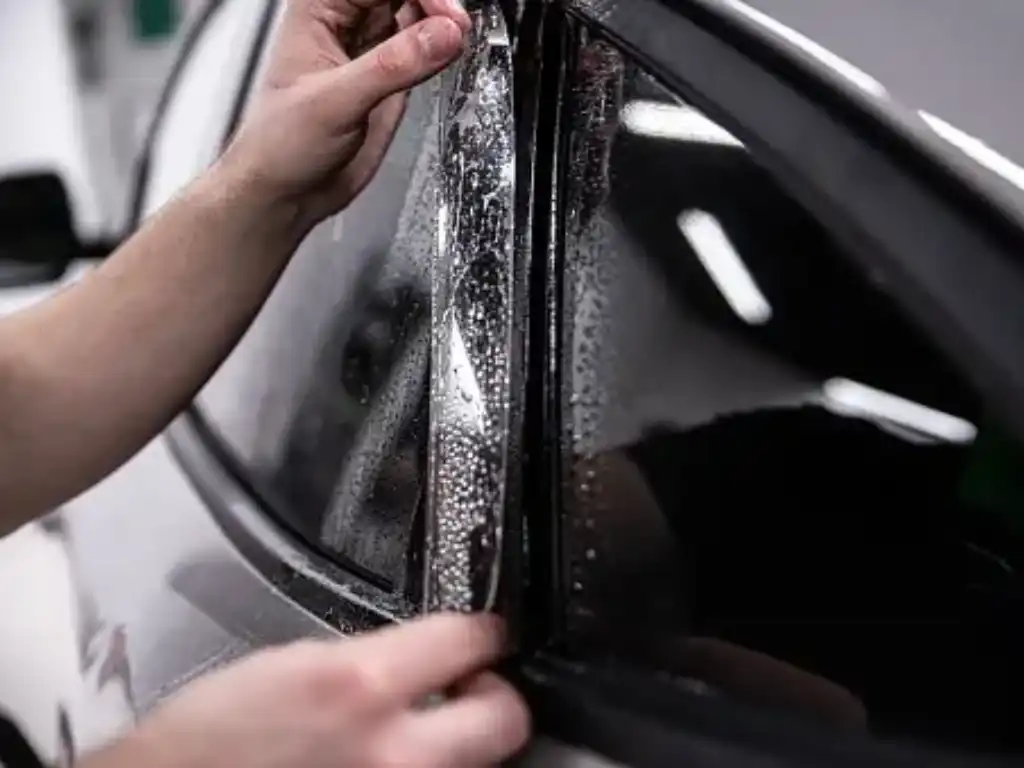
Comparing PPF to Other Car Protection Options
PPF vs. Ceramic Coatings
Paint Protection Film (PPF) and ceramic coatings are two of the most popular options for protecting a vehicle’s exterior, but they function very differently. PPF is a transparent coating and a physical layer that shields the paint from impact damage such as stone chips, scratches, and other physical abrasions. Its thickness and material properties allow it to absorb and dissipate impact energy, effectively preventing the paint underneath from being damaged.
On the other hand, ceramic coatings provide a chemical layer of protection. They bond with the paint on a molecular level to create a hydrophobic (water-repellent) surface that enhances gloss and prevents dirt, grime, and other contaminants from adhering to the paint surface. While ceramic coatings are excellent for preventing chemical damage, such as etching from bird droppings or acid rain, they do not absorb impact and thus cannot protect against physical damage in the same way that PPF does.
PPF vs. Vinyl Wraps
Vinyl wraps and PPF have different uses and are intended for specific needs. The vinyl wraps are usually applied for aesthetic purposes and to make the vehicle more unique. They are available in an enormous variety of colors and finishes that include matte, satin, gloss as well as textured ones like carbon fiber. However, vinyl wraps provide some UV ray protection and minor abrasion resistance, but they are generally thinner and less durable than PPF, and therefore less efficient at impact and serious physical damage protection.
Vinyl is more likely to tear and wear out, particularly at corners, edges and high-stress areas like door handles. Furthermore, whereas PPF is specially engineered to be nearly invisible, offering protection without changing the original color of the car, wraps are expected to completely transform the look of the vehicle. Thus, vinyl can be a good choice for those who want to personalize their vehicle’s look or use it for advertising with vehicle graphics, but it is not an ideal option for those who are mainly concerned with preserving the original condition of the paint.
The costs are also huge. In many cases, vinyl wraps are cheaper than PPF and they are a great choice for people who want to customize their car`s look but are on a tight budget. Nevertheless, those who are concerned about long-term durability and safety would find the money spent on PPF a better option in the long run when compared to the cost of the vehicle. PPF not only shields the vehicle from physical damage but also ensures that the car’s resale value is maintained, this is done by maintaining the original paint job and keeping it in good condition.
When to Replace or Remove PPF
PPF is designed to be long-lasting, but it is not permanent. Over time, it may become damaged or worn and will need to be replaced. Signs that PPF needs to be replaced include significant scratching, yellowing, or lifting at the edges. If the damage is extensive, it is often more cost-effective to replace the film rather than attempt repairs.
Contact Clearpro for PPF Solutions
For people who want to protect their vehicles, Clearpro offers a wide range of PPF solutions. They provide a wide range of paint protection films including clear and satin, and they have specialized films for windows, headlamps, and skylights. Using the latest Polyoptico™ coating technology, Clearpro’s PPF is better than others because it resists yellowing and improves the clarity, glossiness, and water repellency of your car’s paint finish. Their products are competitively priced and are backed by a 10-year warranty, thus making them affordable and also giving long-term satisfaction. Professional installation services will ensure that your car receives the topmost protection and will keep it looking good and maintain its resale value. Get in touch with Clearpro to discover how their PPF solutions can be tailored to your unique requirements.
Frequently Asked Questions
Can PPF Be Removed?
Yes, PPF can be removed safely without damaging the underlying paint, provided that it is done by a professional. The removal process involves applying heat to soften the adhesive, allowing the film to be peeled away cleanly.
Can PPF Be Applied to Headlights?
Yes, PPF can be applied to headlights to protect them from scratches and UV damage. This ppf application can help maintain the clarity and functionality of the headlights, extending their lifespan.
What Innovative Technologies are Used in PPF?
The latest PPF technologies include advancements in self-healing properties, hydrophobic coatings, and improved UV resistance. These innovations help extend the life of the film and improve its protective qualities, making PPF an even more effective solution for car paint protection.
